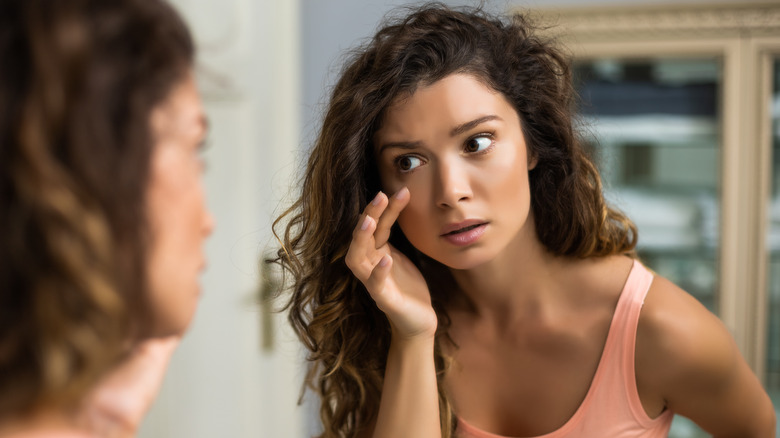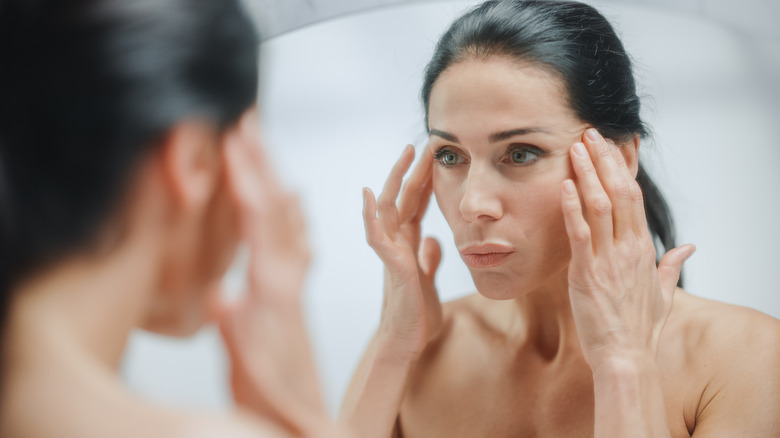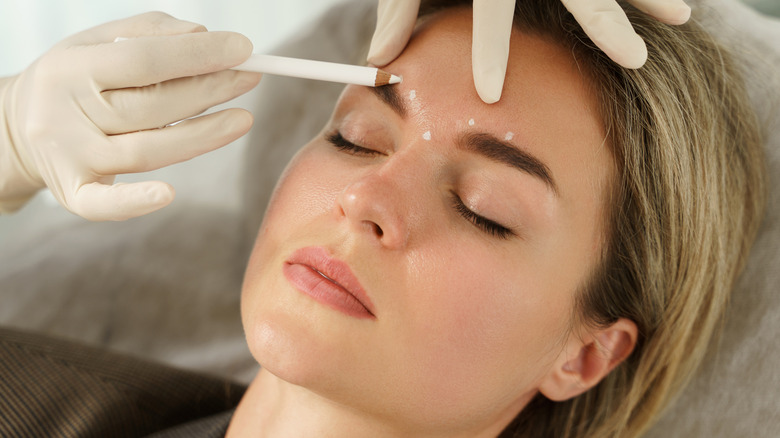What Is 'Ozempic Face' And Can It Be Treated?
Here in America, the only thing we love more than a get-rich-quick scheme is a get-skinny-quick scheme. In the United States, one in three adults is considered to be overweight (per National Institute of Diabetes and Digestive and Kidney Diseases). And with a food supply so rich in highly processed foods, it's not terribly hard to understand how we got here.
While 70% of overweight Americans say they worry about their weight, 40% of them also admit that they aren't proactive in altering their diet to shed the extra pounds (per Cleveland Clinic). Another 24% of people say they can't keep the weight off because they just aren't motivated to work out. So when a drug like Ozempic enters the scene, it's no surprise that people have begun buying it up faster than it can be made.
Ozempic – a drug designed to address diabetes symptoms — has been making waves in recent months after many celebrities and TikTok content creators revealed that the drug has powerful weight loss capabilities. And while many people taking it for this purpose are experiencing impressive results, some are reporting "Ozempic face" as a side effect of the drug.
What is Ozempic face?
To date, a whopping 8.9 million TikTok users have viewed posts with the hashtag #Ozempicface. So what is it, exactly? Many people using Ozempic for weight loss are using the term "Ozempic face" to describe the sagging facial skin and gaunt appearance that is accompanying their extreme weight loss. And while the term makes it sound like a side effect specific to the drug, Dr. David Shafer, a New York City-based plastic surgeon, explained to Everyday Health that it's not necessarily caused by the medication.
In reality, anyone who experiences extreme weight loss is susceptible to "Ozempic face" — even if they've never taken the drug. "As we age and when we lose weight, often we also lose weight in our face, leading to skin laxity," Dr. Shafer told the publication. "This is not anything specific to Ozempic. Any method of weight loss would lead to the same issue."
As we age and our skin begins to lose its elasticity, any amount of facial fat loss can amplify the appearance of lax and sagging skin. And while this is a totally normal part of weight loss and aging, many people have begun looking for ways to restore a more youthful appearance following facial fat loss.
How to treat Ozempic face
When we lose a lot of weight very quickly, it saps a lot of the essential nutrients from our bodies — as well as our skin (per Everyday Health). To improve the appearance of your skin after experiencing weight loss, you can begin by ensuring that you're well-hydrated, eating healthy foods, protecting your skin from the sun, and steering clear of cigarettes. Over-the-counter products containing retinoids can also be helpful in smoothing the skin and combating the papery appearance that often comes with sagging skin.
And while over-the-counter skin care products can't do much to restore volume in the face, the American Academy of Dermatology Association points out that dermal fillers are an effective way to bring back the facial fullness you've been missing and can also do wonders to smooth out some of those fine lines. Plastic surgeons may also be able to tighten loose skin with procedures like microneedling and fractionated CO2 resurfacing — which employs the use of lasers (per Everyday Health).



